IAC News
IAC News No.139, May 2024
Japan Society of Civil Engineers International Activities Center May 24, 2024 IAC News No.139
The IAC News introduces significant and unique international projects, technologies, symposium, communication undertaken by JSCE IAC, International Section, ACECC, and Research & Development Section with over 30 committees, state-of-art- civil engineering technologies and projects, great and interesting achievements of civil engineer and researcher once a month.
This month’s issue starts with the message of Mr. Makio Shichijyo the IAC Acting Senior Director, who hopes to get the IAC utilized in strengthening international commuiation in JSCE. Then, follows three reports: 1) A report about “Japanese Civil Engineers the Global Leaders Symposium Series Symposium No. 23. It focuses on the influence on JICA’s project implemented in Africa, 2) the one about the DOBOKU COLLECTION exhibition held from November 18 to 24 to celebrate the DOBOKU DAY November 18, together with “Bridges and Civil Engineering Exhibition-Tokyo” in cooperation with Tokyo Metropolitan Government, and 3) the one about the 11th Joint Company Information Session for International Students. We happily realized, seeing newcomers in addition to recgulars, that it would be one of the opportunities for Japanese companies and international students to build communication with each other.
We are happy to receive your interests, requests and feedbacks anytime. Thank you.
Message from Acting Senior Director of IAC
Expectation for IAC’s Contributions to Developing JSCE’s International Cooperation & Collaboration
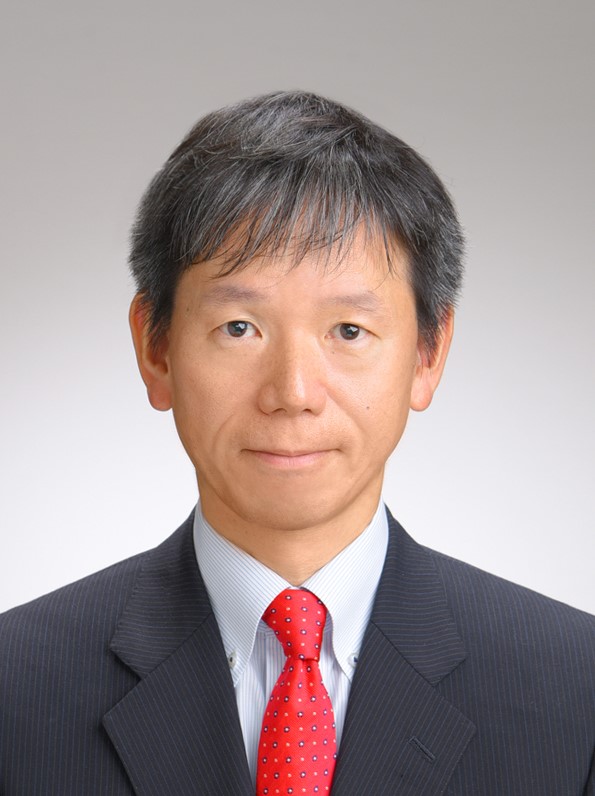
Makio Shichijo
(Acting Senior Director, IAC)
The International Activities Center is made up of six groups: the Information Networking Group, the International Communication & Collaboration Group, the Professional Development and Education Program Group, the International Student Network Group, the Project Group, and the International Civil Engineers Group. I serve as the Acting Senior Director of the International Activities Center and the Group Leader of the International Communication & Collaboration Group.
The core of the International Communication & Collaboration Group’s activities is assisting the international exchange activities conducted by members of JSCE. While there used to be active efforts taken with many countries, at present, efforts are ongoing with Taiwan and, to a lesser extent, China and Vietnam, with efforts undergoing a decline after the coronavirus pandemic.
One of the reasons for this is the decline in the overseas activities of young academic researchers. This is thought to be down to the fact that until around the year 2000, academic researchers were heavily involved in overseas projects such as ODA, but since then, the number of opportunities for involvement has significantly decreased.
While the decline is attributed to fewer Japanese projects in Southeast Asia, a slowdown in technology advancements compared to other countries, political changes in nations like Myanmar, and experienced experts winding down their international exchange efforts, the coronavirus pandemic further accelerated the negative trend.
Despite the pandemic, however, there are numerous JSCE members, including academic researchers, who are engaged in international relations through survey and research committees within JSCE or independent activities. As Dr. Makoto Kimura the IAC Senior Director and Mr. Keitaro Komuna say (The IAC News No. 137 and No. 138 respectively) that, besides the 2022 JSCE President project has come to be run as an IAC activiy, the IAC’s support and assistance, youth power, and veteran power will come more necessary in expanding and enriching communcaiton and collaboration with international counterparts of the JSCE members.
The International Activities Center was set up as a section to function across different organizations within JSCE, such as survey and research committees, and I am further exepcting the IAC to play an active role in promoting the internationalization of the Japanese civil engineering field, strengthening cross-sector collaborations of such as industry, academia and public sectors, and even wider communities such as engineering, financial and insurance ones.
With the number of domestic projects dropping and also sensing that there is a relative decline in the capabilities of Japanese engineers, overseas projects provide an important opportunity to develop one’s engineering skills.
JSCE is an academic society made up of engineers from the fields of industry, academia, and politics that undertakes engineering activities to tackle various challenges from a neutral standpoint. I would like us to undertake initiatives that utilize these characteristics for the advancement of Japanese civil engineering overseas.
【Reported by Makio Shichijo, Acting Senior Director, IAC】
Japanese Civil Engineers the Global Leaders Symposium Series Symposium No. 23: “African Infrastructure Projects and Their Impact”
On Tuesday, February 13, 2024, the Japanese Civil Engineers the Global Leaders Symposium Series No. 23 “African Infrastructure Projects and Their Impact” was held by the JSCE International Activities Center with help from the Japan International Cooperation Agency (JICA). While the countries of Southeast Asia and South Asia such as Indonesia, Cambodia, Nepal, and Bangladesh have been covered to date, this time the focus was on Africa, which is rarely in the spotlight. Although we could not predict how many applications we would receive, 529 people registered in advance and 421 people attended the symposium on the day, which was a much higher attendance than we had anticipated.
There are 51 countries in Africa. The population of Africa has increased by 170% in the past 20 years, and the scale of the economy across the entire continent has increased by 420%, showing tremendous financial growth1. Holding the Tokyo International Conference on African Development (TICAD) for the first time in 1993, Japan has supported development in Africa consistently based on “African ownership” and the “international community partnership.” In 2025, the ninth TICAD will be held in Yokohama. It is expected that more attention will be paid to Africa going forward.
First to present at the symposium was Ms. Ai Wakamiya of JICA, who gave a talk about verifying the effect of maintenance using satellite data on the Northern Corridor Project connecting landlocked countries such as Uganda and South Sudan via Nairobi from the Port of Mombasa in Kenya. On the topic of railroads and roads, the attention of the attendees was ignited when it was quantitively shown that there is a difference in the ripple effect along railway lines. This talk was followed by JICA’s Mr. Yoshimoto Koyanagi who introduced the Port of Dakar in Senegal, Mr. Shigeru Kawakami of Dai Nippon Construction who discussed the Nile Bridge in South Sudan, and Mr. Yujin Uemura of Shimizu Corporation who introduced the Tema Intersection in Ghana. Each of these constructions was established with ODA from Japan, and they are projects that, rather than helping each individual country, went beyond borders to build an international corridor connecting neighboring countries. They were fascinating talks that gave insights into not only the technical challenges but also the struggles and joy that accompanied transporting materials and equipment and working together with each country and the people of these three nations.
The second half consisted of a panel discussion involving the speakers. The panelists spoke openly to an audience of mainly young engineers about the enjoyable differences of overseas projects compared to domestic projects, such as the significance of supporting overseas projects as well as what it is like working and living overseas.
As someone who helped plan this symposium, I was extremely happy that it was well received by the attendees as well who were involved in a lively question and answer session containing questions such as: “What was the reason for adopting the rotary jacked pile method?” “How did you procure construction equipment and materials in landlocked countries?” “How did you spend your days off?”, and I really hope this symposium acts as a catalyst for the attendees, especially the younger generation, to take an interest in Africa.
1Japan’s nominal GDP, which indicates the size of the country’s economy, has remained almost the same from 2002 to 2022 at $4.2 trillion. The population of Japan has reduced from 127 million to 125 million. From 2002 to 2022, the size of Africa’s economy has increased by 420% from $700 billion to $2.9 trillion, while during this same period, the population has also increased from 820 million to 1.38 billion (source: IMF - World Economic Outlook Database (October 2023 Edition)).
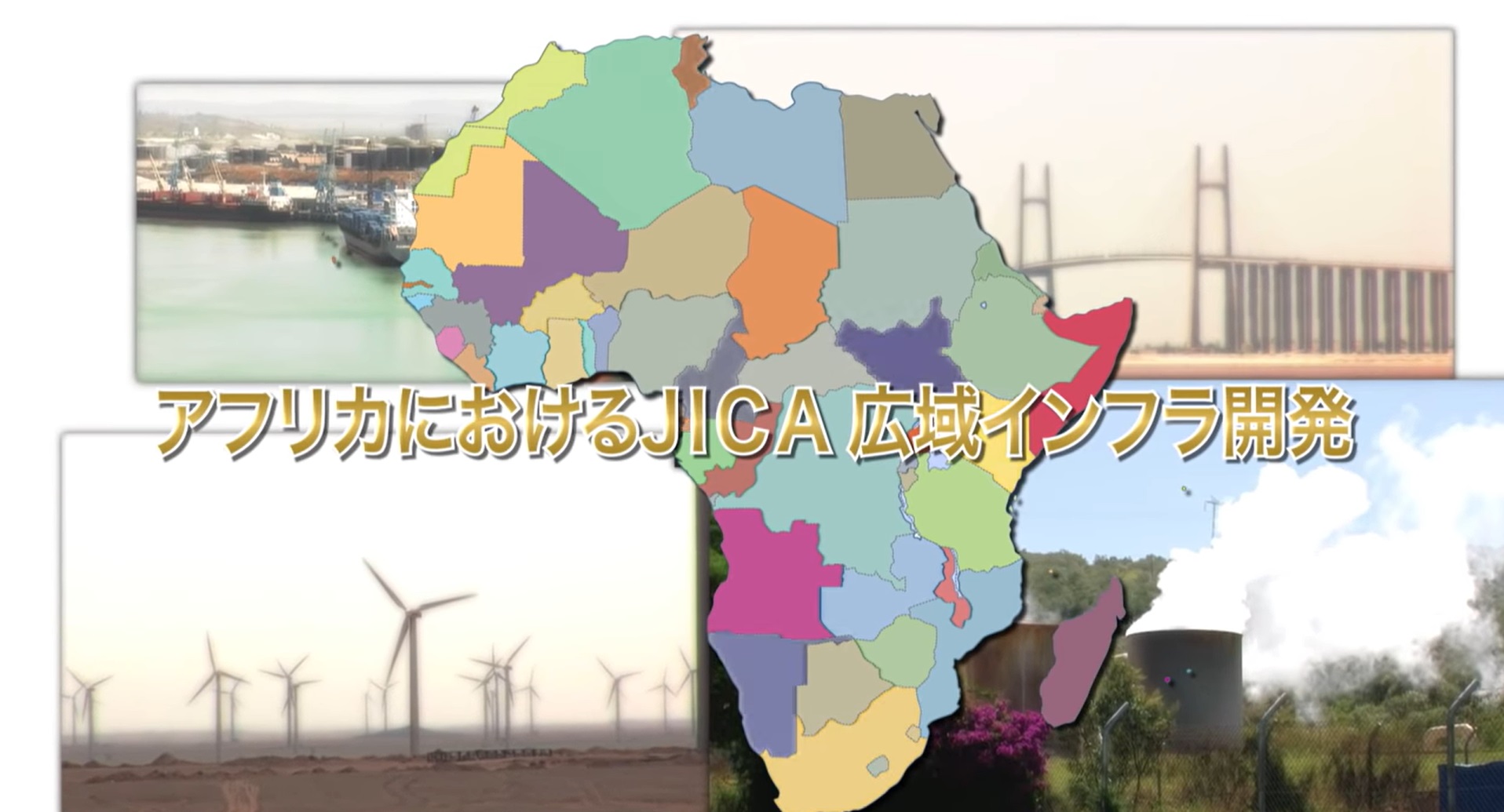
Infrastructure Development across Numerous Countries in Africa by JICA
(https://www.youtube.com/watch?v=9UDEuJsD080)
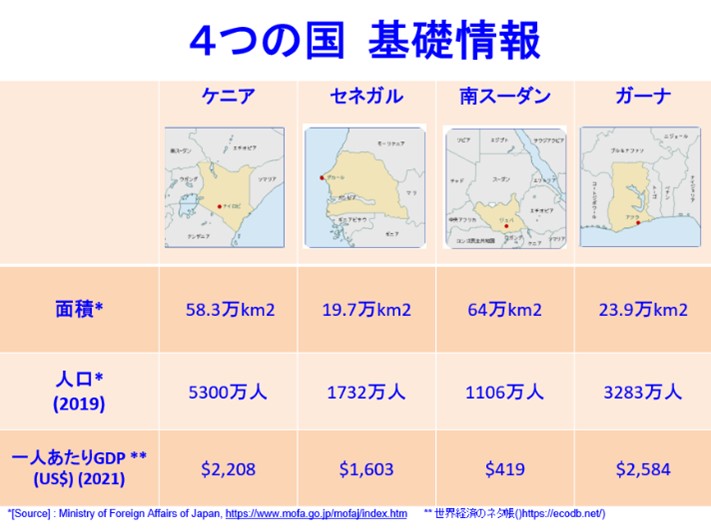
Basic Information about African Region (Four Countries)
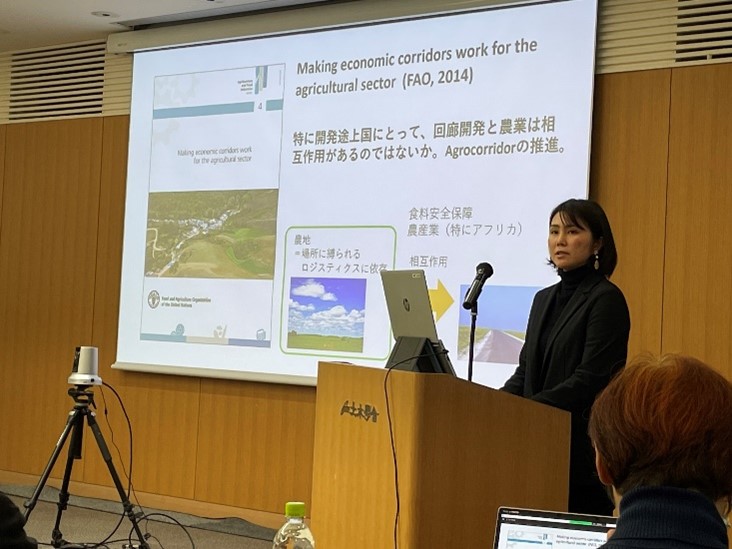
Lecture by Ms. Wakamiya
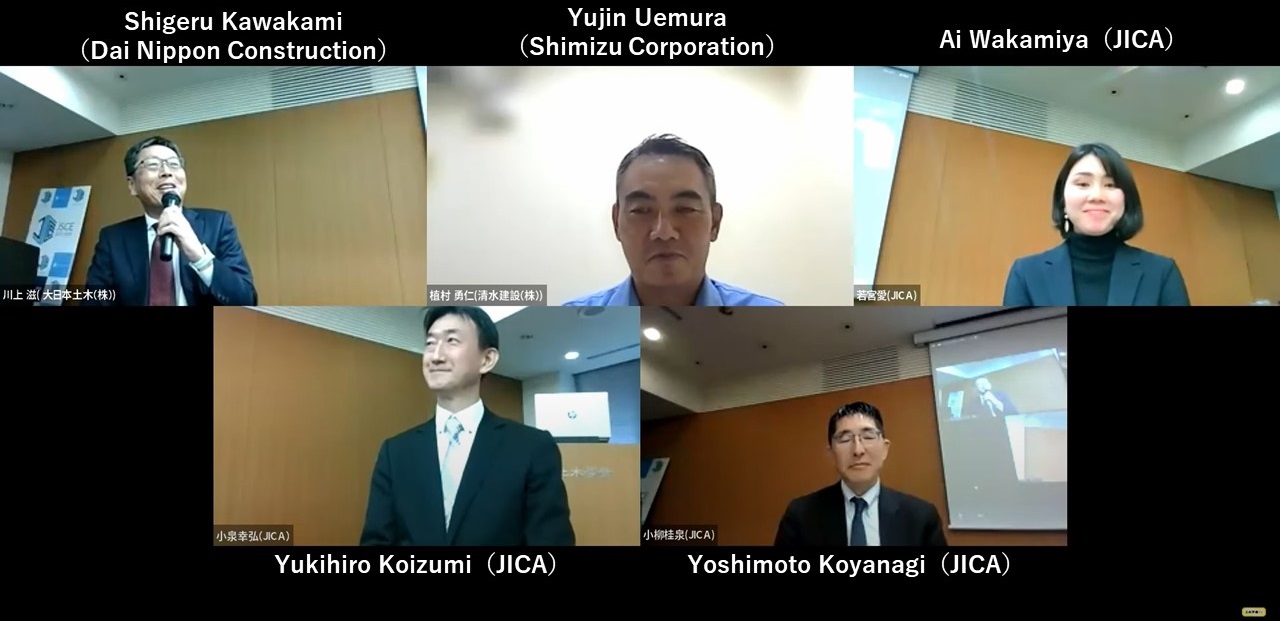
Panel Discussion
【Reported by Yukihiro Koizumi, Director of IAC, Japan International Cooperation Agency (JICA))】
“DOBOKU DAY (Civil Engineering Day)" and Civil Engineering in Society Week (FY2023)
■Introduction
At the JSCE Headquarters and eight branches across Japan, various events and activities are held as part of “DOBOKU DAY (Civil Engineering Day)” on November 18 and Civil Engineering in Society Week, a week of celebration from “DOBOKU DAY” until November 24 on which JSCE was established.
This is a report of the fantastic festivities that were held across the country for fiscal 2023. It has been 36 years since “DOBOKU DAY” was established on November 18, 1987. Thanks to the tremendous help of each branch and each related society, “DOBOKU DAY” has taken root nationwide. As a member of the JSCE Communication and Public Relations Center, I hope that we continue to teach the importance of social capital to the general public. We hope that everyone continues to be understanding and cooperate in the years to come. We would like to express our sincere appreciation to everyone who gave their all to making the festivities a success.
■Report from JSCE Headquarters
The JSCE Headquarters, with the help of other related societies, undertook various initiatives primarily through the “DOBOKU DAY” and Civil Engineering in Society Week period. These included the sharing of information with various media outlets, using the “DOBOKU DAY” logo, and holding the annual events related to “DOBOKU DAY”.
As part of sharing information with media outlets, a “DOBOKU DAY” advertisement was published in a sports newspaper (illustration by manga artist Shoichi Haga), the president’s opening remarks on “DOBOKU DAY” were published in a construction newspaper, and posts were published on social media. Elsewhere, flyers and panels containing the “DOBOKU DAY” logo were produced and “DOBOKU DAY” goods (stickers, balloons, etc.) were actively handed out.
As an event related to “DOBOKU DAY”, DOBOKU COLLECTION is also held each year. DOBOKU COLLECTION exhibits and makes public various collections that are not typically available to see, such as historic documents, drawings, and photos of the civil engineering industry. Continuing from the success of last year, approximately 48,000 visitors made their way to the Event Corner at Shinjuku Station West Exit Plaza during the four days from Tuesday, November 21 to Friday, November 24. On the first day, Tuesday, November 21, an opening ceremony was held for the first time in four years. It was attended by approximately 250 people, including related parties and members of the press.
The main exhibits at this year’s DOBOKU COLLECTION were “100 years since the Great Kanto Earthquake: Today’s prosperity built on restoration of the imperial capital,” “Chuo Shinkansen using the Superconducting Maglev,” and “the restoration of the Morimura Bridge.”
Theme one of the exhibition contents, “100 years since the Great Kanto Earthquake: Today’s prosperity built on restoration of the imperial capital,” exhibited with a focus on civil engineering structures that have continued to support our lives since the restoration, marking 100 years since the Great Kanto Earthquake brought unprecedented destruction in mainly Tokyo and Kanagawa. This exhibition, based on materials collected from the efforts of the DOBOKU COLLECTION team and the “Key Civil Engineering Heritage” feature published in the JSCE Magazine, provided detailed explanations using drawings and photos from which you could sense how Tokyo has grown since the project to restore the imperial capital.
Theme two, “Chuo Shinkansen using the Superconducting Maglev,” is a major project that is attracting attention as Japan’s new main transport route, with construction ongoing. Upon its completion, it will lead to the formation of a “Super Mega Region” that integrates the three major metropolitan areas of Japan: Tokyo, Chukyo, and Kinki. In addition to using photos and video footage to show how the Superconducting Maglev works, as well as workers tackling the construction of the challenging Minami Alps tunnel, shield tunnels of the cities, and elevated bridges, this exhibition also used models and 3D project mapping to educate visitors. Many visitors took photos to remember the day in front of the super-large facade produced exclusively for this event using a photo of the front of the Chuo Shinkansen. Visitors of all ages seemed to learn and get excited about this new piece of infrastructure.
As for the third theme, “the restoration of the Morimura Bridge,” it has been over 100 years since the bridge was constructed. Images were used to give a comprehensive introduction to this project to restore a heavily deteriorated tangible cultural asset on the brink of collapse. As very few books remain from the time of the design stage, illustrations were created and reproduction calculations were made based on 3D measurements, and visuals were used in chronological order to explain the process of restoration and construction activities aimed at reusing the original components as much as possible. This was also combined with tales of the struggles faced by the engineers who made the restoration a success.
This year’s DOBOKU COLLECTION was also held together with the Tokyo Metropolitan Government Bureau of Construction at the same time as the “Bridges and Civil Engineering Exhibition - Tokyo” (organized by the Tokyo Metropolitan Government Bureau of Construction). “Bridges and Civil Engineering Exhibition - Tokyo” exhibited a model of the restored Kiyosu Bridge in honor of 100 years since the Great Kanto Earthquake. Other initiatives included the handing out of bridge cards and making paper crafts.
A yellow color scheme was adopted as the signature color for the DOBOKU COLLECTION venue in Shinjuku. We received a lot of feedback from visitors who said they were drawn into the venue as they passed by and were captured by the eye-catching designs of the quintessential Doboku facade and flyers even from a distance. In the venue itself, as a means of giving out goods to visitors who answered the questionnaire, the card machine, which emitted cards containing photos of civil engineering heritage, and the capsule toys, which were modified to catch the eye by flashing light from inside the capsule machine, both proved very popular. The battery-powered train that ran on the model produced to give an impression of the underground track of the Chuo Shinkansen was also a big draw among the visitors.
We hope to make use of the interactions we had with the visitors to the DOBOKU COLLECTION to generate various ideas for future exhibitions to further communicate the greatness of civil engineering with more people and deepen their understanding of the field.
*This article was published in the May 2024 issue of the JSCE Magazine. Please check the JSCE Magazine for the reports of the eight branches across Japan.
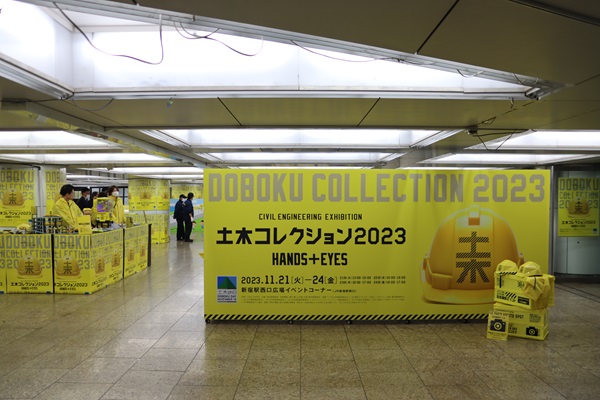
DOBOKU COLLECTION 2023
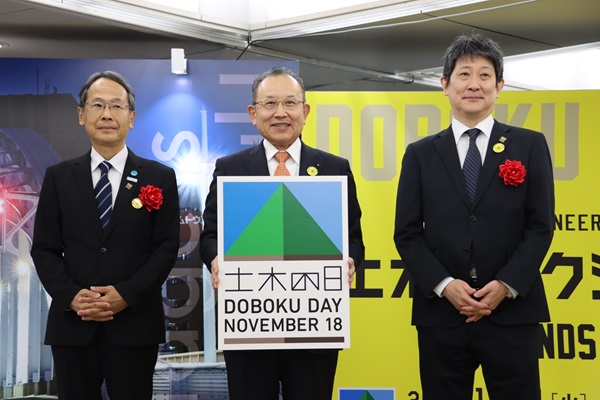
Opening Ceremony of DOBOKU COLLECTION 2023 (Photo taken together with “DOBOKU DAY” Panel)
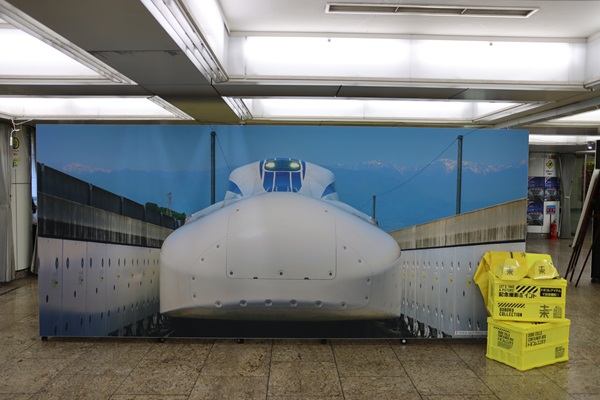
A super-large “Chuo Shinkansen using the Superconducting Maglev” facade
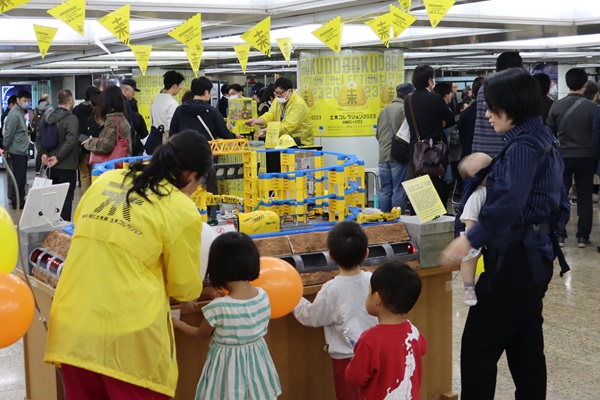
DOBOKU COLLECTION was enjoyed by everyone from adults to children.
【Reported by JSCE Communication and Public Relations Center】
11th Joint Company Information Session for International Students (Online)
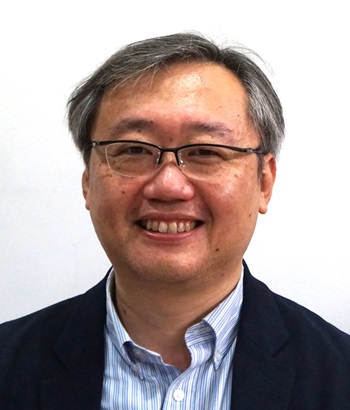
Ji Dang
(International Student Network Group, IAC)
Since 2013, the International Student Network Group of the International Activities Center hosts Joint Company Information Session for international students studying in Japan to provide them information on the businesses of Japanese civil engineering companies, overseas projects, and recruitment. This year (2023), the 11th Company Information Session was held online from 12:00 to 17:50 on Saturday, December 9, in collaboration with the IAC International Civil Engineers Group and the Global Civil Engineer Research Subcommittee of the Consultants Committee. A total of 83 international students from universities national wide and 17 Japanese companies participated on the day. The participant companies are as follows.
[Participant companies]
Eight-Japan Engineering Consultants Inc., TOA Corporation, Penta-Ocean Construction Co., Ltd.,
Katahira & Engineers International Co., Ltd., Asunaro Aoki Construction Co., Ltd.,
Obayashi Corporation, Something Co., Ltd., Electric Power Development Co., Ltd., Yachiyo Engineering Co., Ltd.,
Hazama Ando Corporation, TSUCHIYA Corporation, JGC Corporation, Pacific Consultants Co., Ltd., FORUM 8 Co., Ltd.,
Oriental Consultants Global Co., Ltd., Integrated Design & Engineering Holdings Co., Ltd.
This event was held in three parts: (1) the Opening Session, (2) the Company Sessions, and (3) the “Senpai” Sessions. In the first part, the Opening Session, the purpose of the Company Information Session was explained during the opening remarks, and then Ms. Thithudung Nguyen (Shimizu Corporation) and Mr. Deepanshu Agarwal (Location Mind), who are former international students that now playing a key role in Japanese companies respectively, gave talks about “Senpai’s Experience in Studying and Working in Japan”, in which they introduced their experiences regarding topics such as research activities at Japanese universities, job hunting, and works in their companies.
In the second part, from 12:45 to 16:35, each participant company held four Company Sessions in the form of a web meeting for 20 minutes per session. In those sessions, information was provided on topics such as the contents of work, introductions to overseas projects, and how to join a Japanese company.
After the Company Sessions drew to a close, Senpai Sessions were held with the help of five former international students who have landed themselves a job at a Japanese company. Those involved were Ms. Nguyen, Mr. Deepanshu, Ms. Suihei Ryu (Asunaro Aoki Construction Co., Ltd.), Mr. Shrestha Ashishi (Hazama Ando Corporation), and Mr. Lucas Alves (Pacific Consultants Co., Ltd.). From their position of experience, these five individuals discussed the preparations and skills required for getting a job in Japan. Event attendees eagerly asked their seniors questions, sparking passionate discussions beyond the boundaries of seniority.
The International Student Network Group will continue to work together with former international students who are now employed at Japanese companies to provide useful information to current international students aiming to get a job in Japan.
In the end, I would like to share with you about the internship survey conducted by the International Civil Engineers Group of the International Activities Center. This group collects information about internships at Japanese construction companies for international students to assist them. The International Civil Engineers Group will conduct a survey of construction companies and share the information they collect with international students through each university. We would like to ask for your kind cooperation with the survey. For details about the survey, please contact the International Activities Center secretariat (iad@jsce.or.jp).
★Notice About the 26th International Summer Symposium★
The International Student Network Group will host the 26th International Summer Symposium at the JSCE Annual Meeting in 2024. As part of the symposium, the Global Civil Engineers Workshop will be organized for international students, Japanese university students, and young engineers. For details about the workshop, please check the International Activities Center website. We hope to see you there!
【Reported by Ji Dang, International Student Network Group (Saitama University)】
Updates
◆In response to 2024 Noto Peninsula Earthquake
https://www.jsce-int.org/node/873
◆The International Infrastructure Archives
– A Compilation of Japan’s Greatest Projects in Transfer of Civil Engineering Technology in Service –
http://www.jsce.or.jp/e/archive/
◆Infrastructure System Resilience: An Engineering Framework for Assessment, Management, and Governance
https://ascelibrary.org/doi/10.1061/9780784485088
◆IAC “News Pick Up!!” on the JSCE Japanese website
https://committees.jsce.or.jp/kokusai/iac_dayori_2024
◆【YouTube】 Civil Engineering, in Your own Words (Full ver.)
https://youtu.be/r1Dc37kABXM?feature=shared
◆The English Summary Edition of JSCE Standard Specifications for Concrete Structures
https://www.jsce.or.jp/committee/concrete/e/web/pdf/Summary_edition_2024...
◆Summary of featured articles in JSCE Magazine Vol. 109, No.5, May 2024
http://www.jsce-int.org/pub/magazine
◆Journal of JSCE
https://www.jstage.jst.go.jp/browse/journalofjsce
◆Frontiers of Concrete Technology, 6th JSCE Concrete Committee Webinar
https://youtu.be/O9SjBacieXg?feature=shared
◆Safe and Healthy Work in the Digital Age 2023-2025 Campaign
https://healthy-workplaces.osha.europa.eu/en/media-centre/events/launch-...
◆【YouTube】 Taiwan Public Infrastructure Archives: Public Water Supply Series
https://youtu.be/mMMvODevd_Q?feature=shared
◆ACECC Future Leaders:https://aceccfutureleaders.org/
◆CECAR10:http://www.cecar10.org/
◆The Japan Foundation Indo-Pacific Partnership Program (JFIPP Research Fellowship)
https://www.jpf.go.jp/e/project/intel/exchange/jfipp/research/index.html
◆The 12th East Asian Dam Conference (EADC):https://confit.atlas.jp/guide/event/eadc2024/top
◆The 10th World Water Forum:https://worldwaterforum.org/
◆78th ECCE General Meeting(22 - 24 May 2024, Riga, Latvia)
http://www.ecceengineers.eu/news/2024/78_ecce_meeting.php?id=41
Subscription
The IAC News is one of the communication tools to share information and ideas with the members. We would like to invite you, your friends and colleagues to join the communication and to subscribe the IAC News. Please register online: (http://www.jsce-int.org/node/150). We look forward to meeting you.
